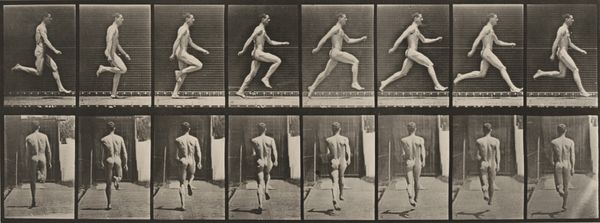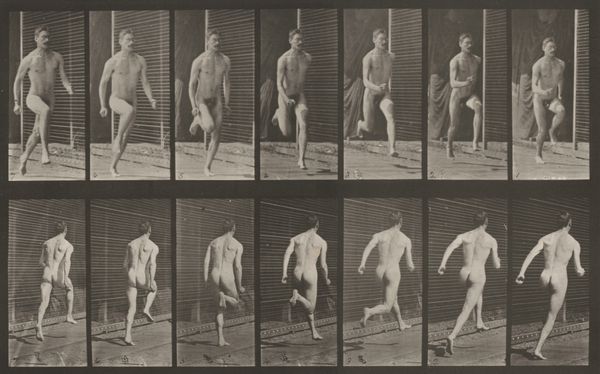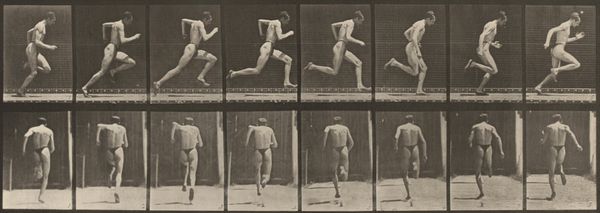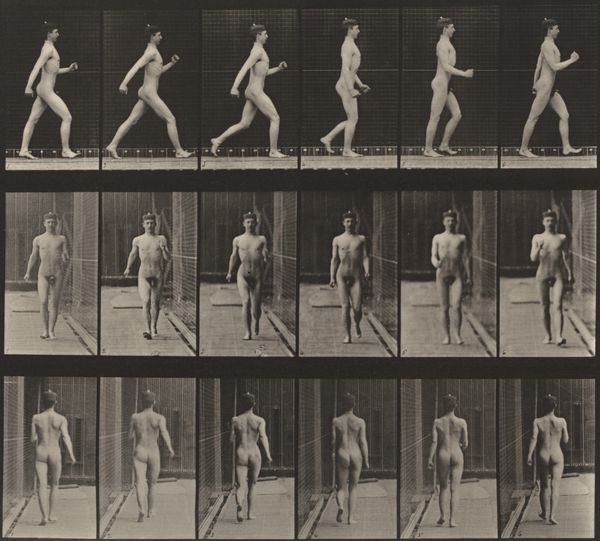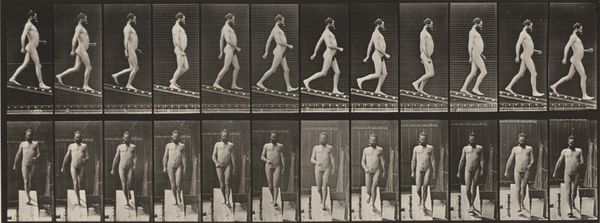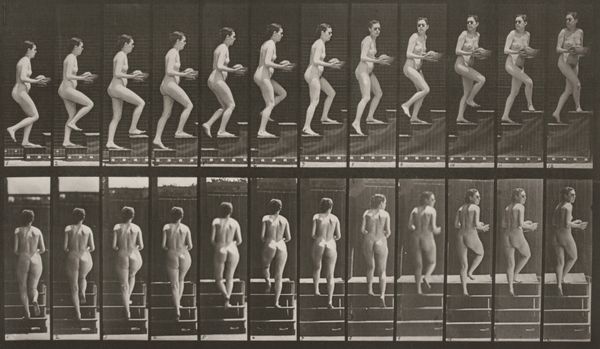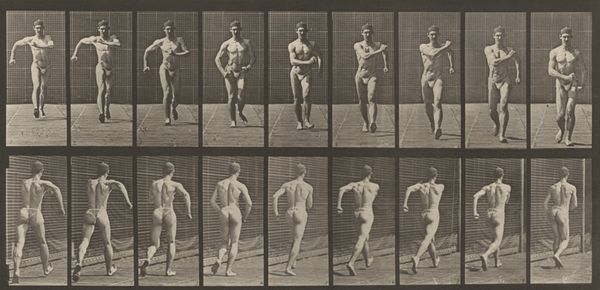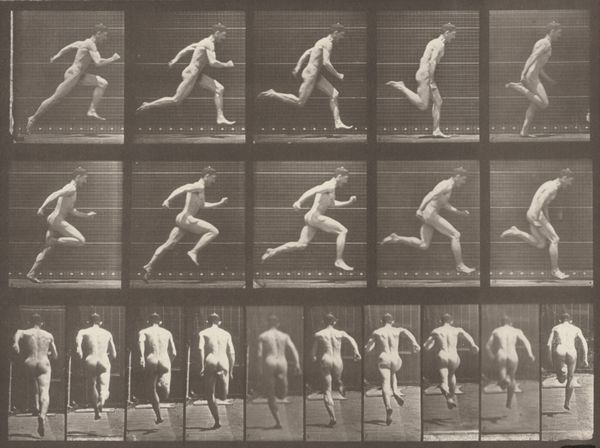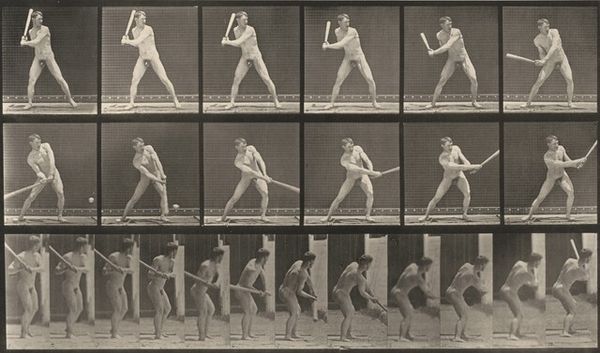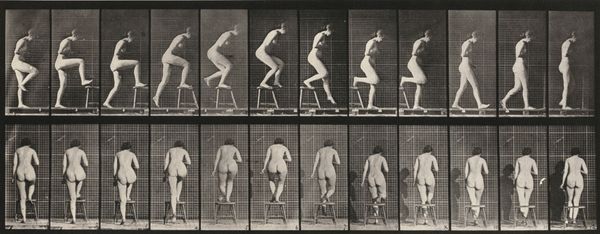
Plate Number 151. Descending a stepladder and turning around with a rock in hands 1887
0:00
0:00
print, photography, gelatin-silver-print
#
kinetic-art
# print
#
figuration
#
photography
#
gelatin-silver-print
#
monochrome photography
#
nude
#
monochrome
Dimensions: image: 19.9 × 36.65 cm (7 13/16 × 14 7/16 in.) sheet: 48.15 × 61.1 cm (18 15/16 × 24 1/16 in.)
Copyright: National Gallery of Art: CC0 1.0
Editor: So this is Eadweard Muybridge’s “Plate Number 151. Descending a stepladder and turning around with a rock in hands,” a gelatin silver print from 1887. It’s fascinating how he captures the movement, almost like a flipbook. What strikes you most about this piece? Curator: What's arresting to me is the dissection of labor within this single frame. Muybridge doesn’t just present the figure; he meticulously breaks down a common, physical action into discrete units of production. Each photographic plate becomes a testament to the material effort embedded within the act of descending and turning. Notice the grid: it isn’t just a scientific tool. It's a form of Taylorism applied to the body. Editor: Taylorism? Curator: Exactly! Like industrial processes optimized for efficiency, Muybridge isolates and measures each micro-movement. The man, the rock, even the staircase – they're all elements within a system of visual recording. And let's not ignore the socio-economic context of photography at this time. Who had access to this technology? Who could afford to produce and consume images like these? Editor: So you're saying it’s not just about science or art, but also about who gets to define and record movement? Curator: Precisely! Consider the materials involved: the chemicals, the paper, the labor required for both the photographer and the photographed. This print isn’t merely a depiction; it’s a product of its time, embedded within a complex web of material relations and class structures. It asks, how does technology mediate and redefine physical labor and artistic production? Editor: That gives me a completely different perspective. I was initially just seeing movement, but it’s also about the conditions that allowed this image to exist. Curator: And the social implications that followed, think about the motion picture industry to come! That's the beauty of looking at art through a materialist lens; we unravel the hidden stories woven into the fabric of the artwork itself.
Comments
No comments
Be the first to comment and join the conversation on the ultimate creative platform.
